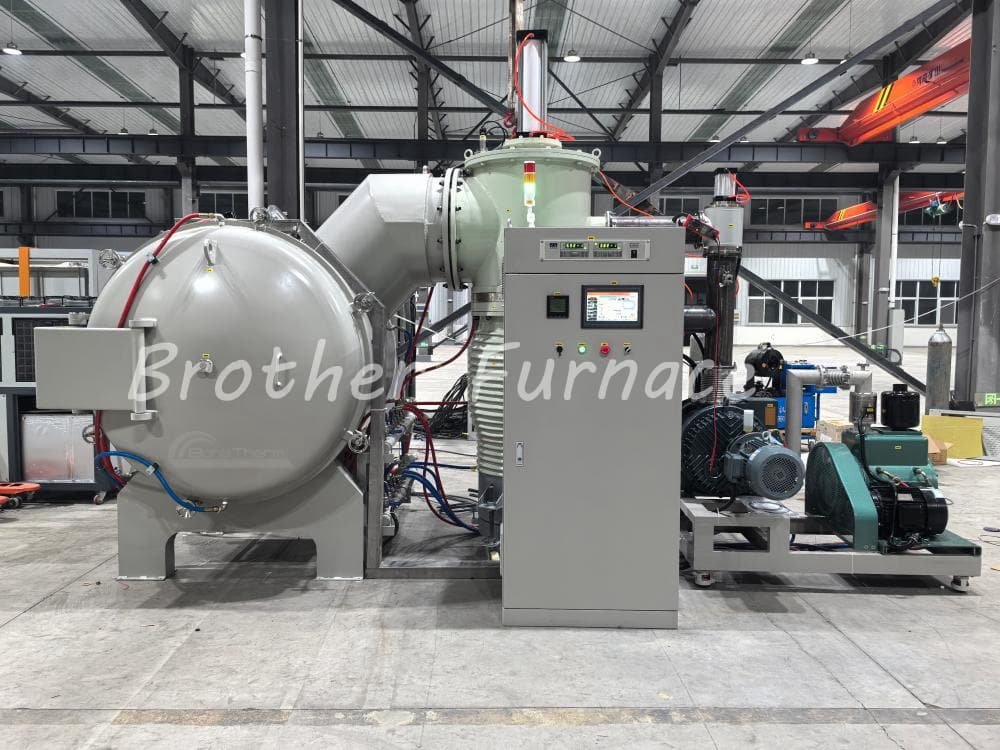Vacuum heating furnaces are advanced thermal processing systems designed to operate in oxygen-free environments, enabling precise control over material properties at high temperatures. These furnaces are critical in industries ranging from aerospace to additive manufacturing, where contamination-free processing and high-temperature stability are paramount. This article highlights the core components of vacuum furnaces, focusing on heating elements for different temperature ranges and the role of vacuum induction heating.
Heating Elements and Temperature Ranges
The performance of a vacuum furnace heavily depends on its heating elements, which determine the maximum achievable temperature. Below are the primary heating elements and their operational limits:
- Heating Tubes – Capable of reaching 1000°C, suitable for low-temperature processes like annealing or brazing.
- Heating Wires – Operate up to 1200°C, ideal for applications requiring moderate heat, such as sintering ceramics.
- Molybdenum Strap Heaters – Withstand 1350°C, commonly used in high-temperature heat treatment of refractory metals.
- Silicon Carbide (SiC) Heating Elements – Achieve 1400°C, preferred for processes involving advanced ceramics or glass.
- Molybdenum Disilicide (MoSi2) Heating Elements – Reach 1700°C, employed in high-purity applications like semiconductor diffusion.
- Graphite Heating Elements – Excel at 2200°C, enabling extreme-temperature processes such as carbon composite sintering or ultra-high vacuum (UHV) treatments.
Each heating element is selected based on thermal requirements, material compatibility, and process repeatability. For instance, graphite elements are favored in reducing atmospheres, while MoSi heaters offer oxidation resistance in air-leak scenarios.
Vacuum Induction Heating
A specialized subset of vacuum furnaces incorporates induction coils for rapid, localized heating. This method, known as vacuum induction heating, uses electromagnetic fields to generate eddy currents directly within conductive materials, enabling:
- Fast Induction Melting: Ideal for metals like titanium or superalloys, where rapid melting and solidification are required.
- Precision Energy Transfer: Minimizes thermal distortion in components such as turbine blades or medical implants.
- Integration with High Vacuum: Combines induction heating with vacuum levels down to 7×10⁻⁴ Pa, eliminating oxidation and ensuring material purity.
Induction heating systems are often paired with advanced vacuum pumps (e.g., mechanical, diffusion, or molecular pumps) to maintain process stability.
Critical Supporting Systems
- Vacuum System:
- Achieves vacuum levels from -0.1 MPa (low vacuum) to 7×10⁻⁴ Pa (high vacuum) using combinations of rotary pumps, Roots pumps, and diffusion pumps.
- Molecular pumps are employed for ultra-high vacuum applications.
- Cooling Mechanisms:
- Gas or Oil Quenching: Ensures rapid cooling for metallurgical phase transformations.
- Water-Cooled Jackets: Maintain chamber wall temperatures below 30°C during continuous operation.
- Control Systems:
- PID/PLC Controllers: Enable programmable temperature profiles with ±1°C accuracy and 51-segment automation.
- Touchscreen Interfaces: Simplify operation and data logging.
Applications Across Industries
- Aerospace: Heat-treating turbine blades and titanium alloys.
- Medical Devices: Sintering surgical implants in contamination-free environments.
- Semiconductors: Annealing silicon wafers at 1400°C using SiC elements.
- Additive Manufacturing: Stress-relieving 3D-printed metal parts.
- Research: Synthesizing novel materials under controlled atmospheres.
Conclusion
Selecting a vacuum heating furnace requires balancing temperature demands, material compatibility, and process goals. Innovations in heating elements—such as graphite for 2200°C operations—and vacuum induction technology continue to expand their capabilities. For specialized applications, custom configurations in chamber geometry, pumping systems, and thermal profiles ensure optimal performance. By leveraging these advanced systems, industries achieve unparalleled precision in high-temperature material processing.
Contact us now for a custom quote or free consultation.
Vacuum furnaces recommend :
- Vacuum Brazing Furnace
- Vacuum Sintering Furnace up to 1700℃
- Vacuum Induction Melting Furnace
- Graphite Vacuum Furnace up to 2200℃
- Vacuum Gas Quenching Furnace
- Vacuum Hot Press Furnace
Follow us on Facebook
